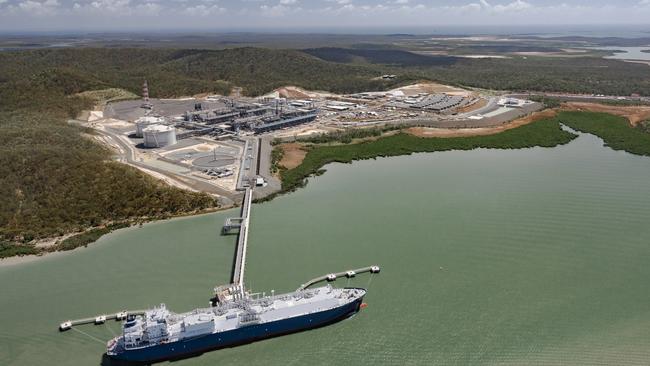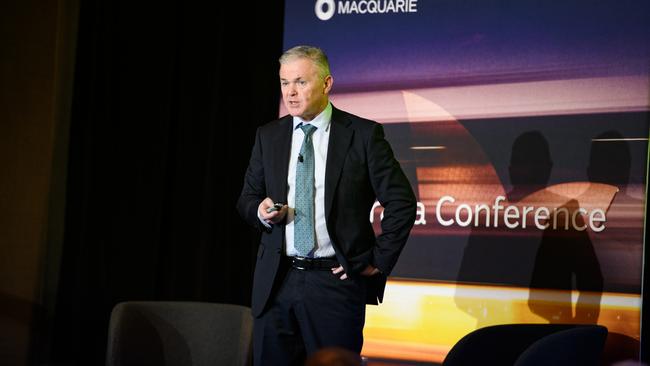Where will Santos’ next growth projects come from, analysts ask
Santos must show how it can bolster production in the medium term without spending a significant amount, analysts say.

Santos will need to demonstrate how it intends to bolster production in the medium term without significant uplifts in capital expenditure, say analysts ahead of the company’s meeting with investors on Tuesday.
The oil and gas group is struggling to placate investor frustration as its share price has been little changed in recent years. The stock closed at $6.72 per cent on Friday, just 1.8 per cent below what it was trading at three years ago. The company has said it expects a lift in profits as projects such as the Barossa LNG and Moomba carbon capture and storage project come online, and spending is reduced.
But analysts such as EST Marquee energy analyst Saul Kovanic say Santos will need to deliver a medium-term view beyond already announced projects.
Mr Kovanic said there was a risk market consensus was unrealistic as the industry struggled to reconcile the company’s outlook between 2026 and 2032. He said Santos would soon need to unveil its growth plans, as production was set to ebb in Papua New Guinea and Gladstone LNG in Queensland.
“Our analysis suggests consensus could be up to around 20 per cent too optimistic on production or around $4bn too optimistic on spend versus the most plausible scenario,” Mr Kovanic said in a note to clients.
However, other analysts were less bearish, insisting the company was well positioned.
Investor demands will not be surprising to Santos and CEO Kevin Gallagher, who in recent months has alluded to a growing pipeline of opportunities.

The company continues to work on the Narrabri gas project in NSW amid preliminary signs that pockets of opposition are waning, while it also has scope to expand in PNG, commit to a new project off Western Australia or a project in Timor Leste, should a spate of issues there be overcome.
Santos this year was granted the authority to undertake key works for its eastern seaboard projects, including supporting infrastructure for the controversial Narrabri project, after an independent report cleared the oil and gas company of coercing land owners.
Santos is seeking to tap about 1500 petajoules of gas reserves from the Narrabri project. Daily production of up to 200 terajoules has been predicted, accounting for about half NSW’s current gas needs, much needed as the east coast is expected to endure a significant shortfall as soon as 2026 and definitely by 2028.
Mr Gallagher has insisted the pipeline of opportunities would mean competition would be fierce and costs kept down as a result.
But analysts are sceptical, citing recent increases in costs at its project in Alaska as evidence. Santos this year announced its Pikka project would cost 20 per cent more than expected, though it tempered market frustration by revealing oil production would start up to six months earlier than initially scheduled.
Pikka and the Barossa projects are critical for Santos’s standing with investors. Barossa is months away from first gas, with Pikka scheduled to begin just months later – allowing the company to see an uplift in returns.
Santos has said that, on an oil price of $US75 a barrel, Pikka would have an estimated rate of return of 20 per cent, described by Mr Gallagher as “significant value” for shareholders.
But shareholders are impatient and are in little mood for prolonged periods of sluggish share price performance – a mood that looms amid consistent speculation about the future of Mr Gallagher.
Santos has rejected speculation that Mr Gallagher could be a candidate to take over at MinRes, but with a sizeable loyalty bonus set to be paid to the CEO next year, analysts continue to stoke talk he could look for a new challenge.




To join the conversation, please log in. Don't have an account? Register
Join the conversation, you are commenting as Logout